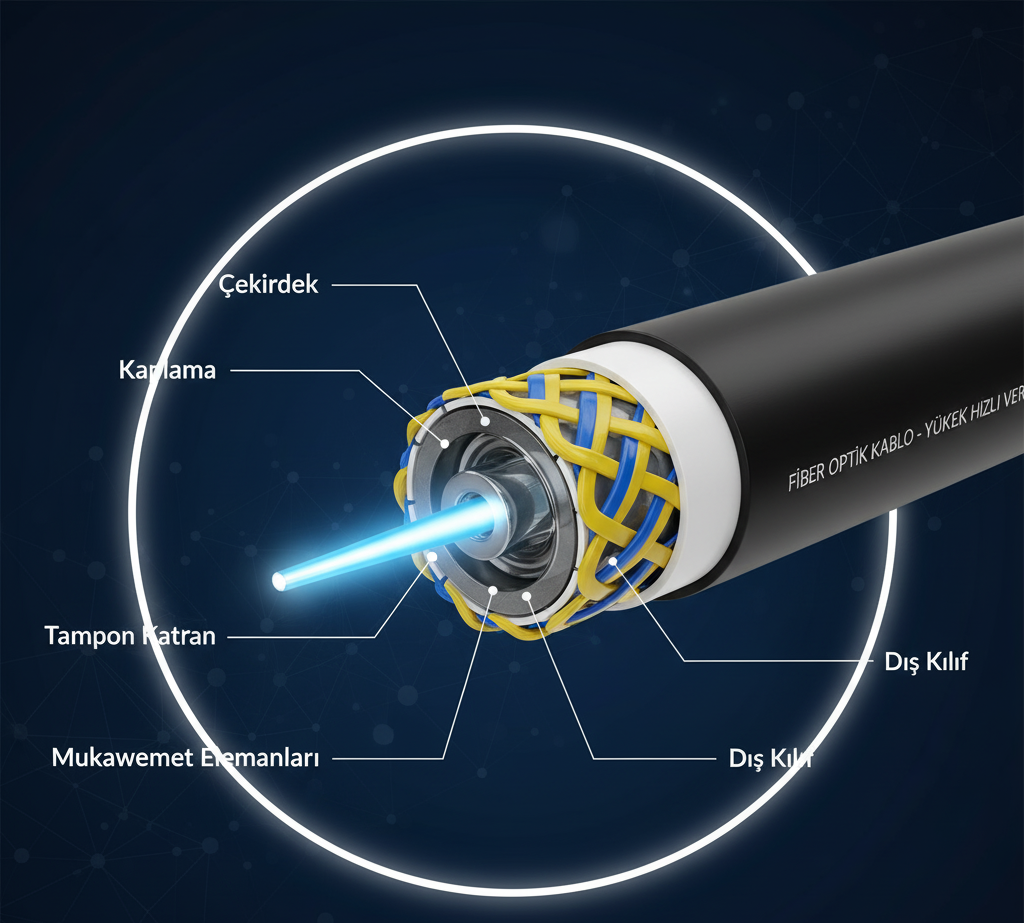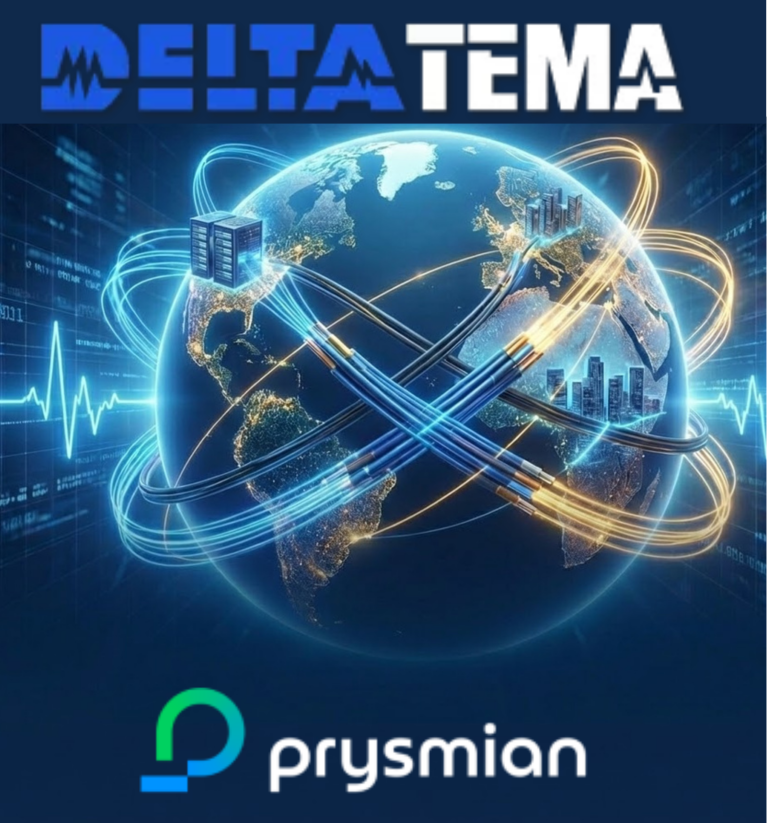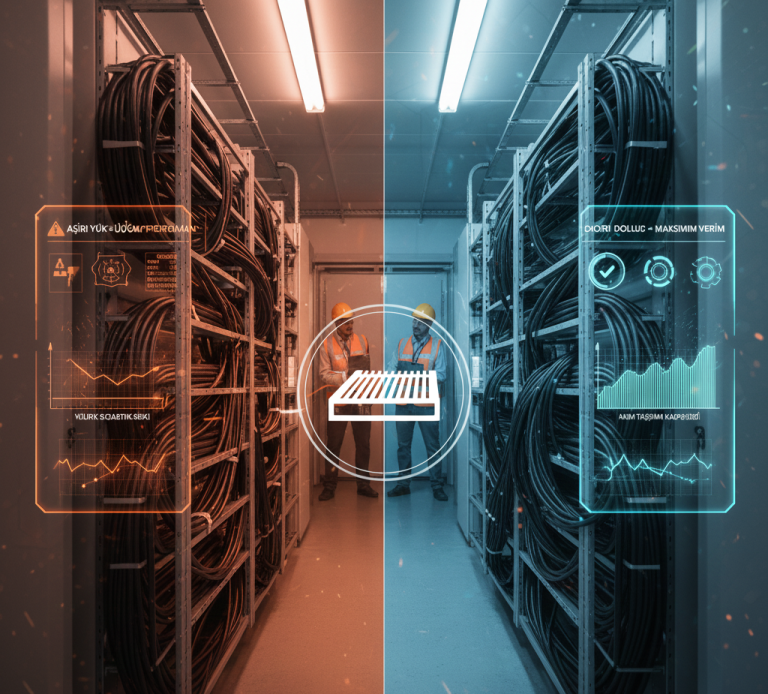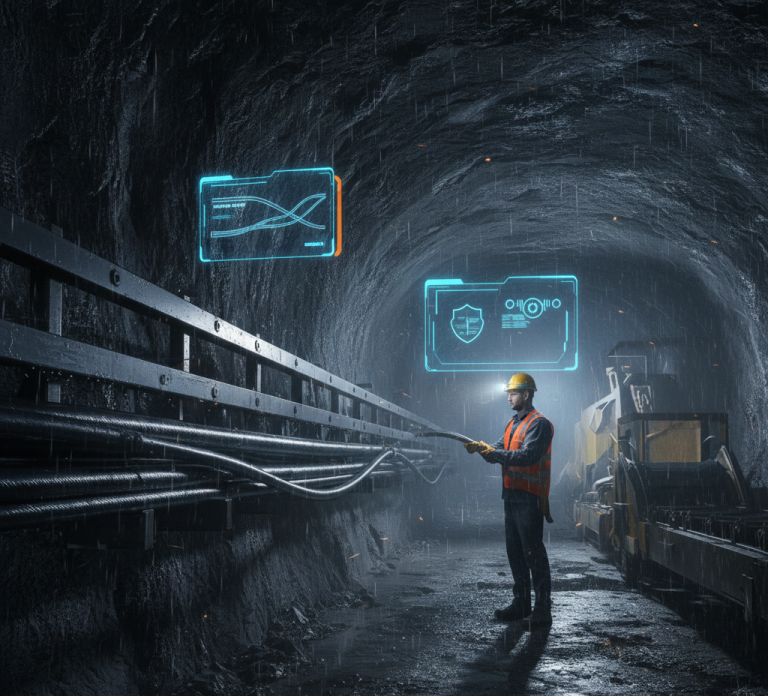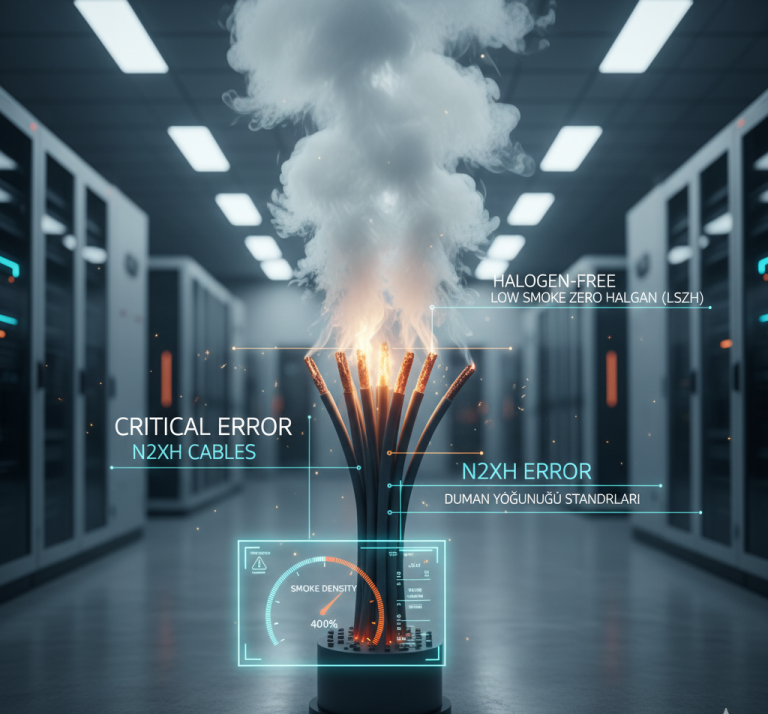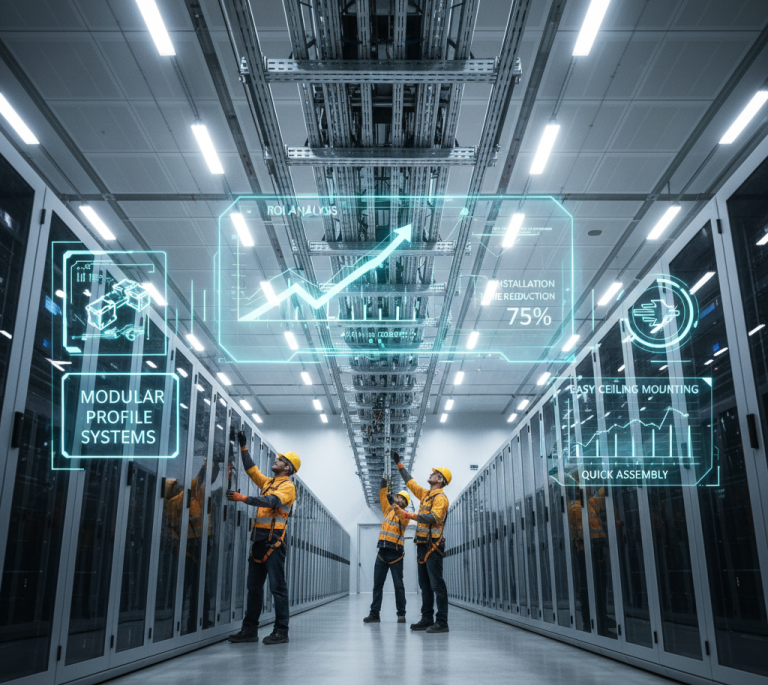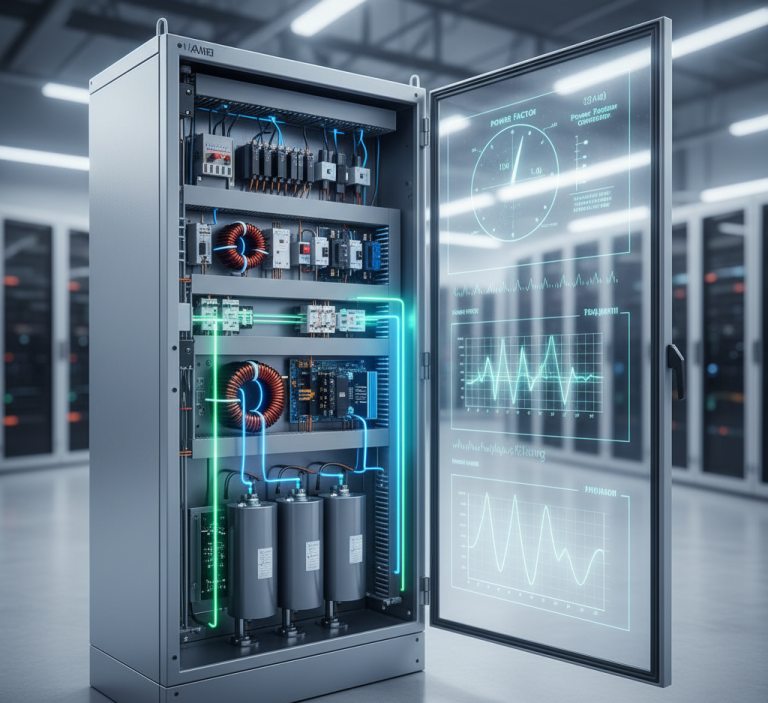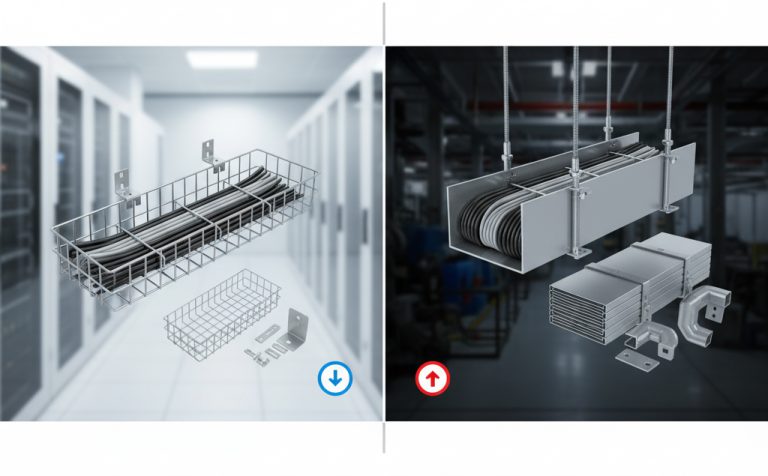What is Fiber Optic Cable, Types and Features? This technology forms the basis of today’s communication and data transfer technology, being a high-speed and high-bandwidth cable type. Unlike traditional copper cables, it transmits data via light signals instead of electrical signals. This allows fiber optics to achieve speeds and distances that copper cables cannot match. The fiber optic cable system, often referred to as “glass cable internet” or “optical cable,” relies on the principle that information travels almost at the speed of light.
In this comprehensive guide on What is Fiber Optic Cable, Types and Features, we will examine what the cable is, its fundamental physics principle (optical physics), its types, areas of use, and why you should choose this technology for your project.
What is Fiber Optic Cable and How Does It Work?
The shortest answer to the question, What is Fiber Optic Cable? is that it is a communication medium that transmits data via light signals, consisting of thousands of thin fiber strands made of glass (silica) or plastic, thinner than a human hair. This technology is the physical application of the question What is Optics?
It works thanks to the principle of Total Internal Reflection, one of the fundamental principles of optical physics:
- Core: The glass part where light is carried, which has a high refractive index.
- Cladding: The glass or plastic layer surrounding the core, which has a lower refractive index. It acts as a mirror to prevent light from escaping the core.
As light travels through the core, it is constantly reflected from the inner surface of the cladding. This minimizes signal loss to almost zero, allowing data to be transmitted over very long distances at incredible speeds. The data transmission speed of a fiber optic cable is theoretically thousands of times higher than that of copper cables.
Fiber Optic Cable Types and Features
What are the types of fiber optic cable? Having the correct information about fiber optic cable types and features is critical to meeting your project’s requirements. Fiber cable types are divided into two main categories based on how light passes through the core:
Single Mode (SM) Fiber Cable
- Features: The core diameter is very small (approximately 9 microns). It only allows a single light path (mode) to travel. The term SM fiber cable refers to this single-mode structure.
- Areas of Use: It is ideal for data transmission at very high speeds and over very long distances (kilometers). It is used in intercity and submarine telecommunication lines. The speed and bandwidth of this fiber optic cable are the highest.
Multi Mode (MM) Fiber Cable
- Features: The core diameter is larger (50 or 62.5 microns). It allows multiple light paths (modes) to travel.
- Areas of Use: Suitable for applications requiring high speed over shorter distances (a few hundred meters). It is preferred for data centers and in-building network connections. OM4 fiber cable features offer higher bandwidth compared to previous generations of Multi Mode cables.
Why Should Fiber Optic Cable Be Preferred? (Data Speed and Advantages)
What is the use of fiber cable? Fiber optic cables have become indispensable for modern communication infrastructure due to their unique advantages:
- High Speed and Bandwidth: Unlike copper cables, fiber optic cables can carry much more information simultaneously. Data transfer via fiber optic cable is not affected by electromagnetic interference.
- Long-Distance Transmission: Signal attenuation (loss) is much less than in copper cables. The need for signal boosters is reduced.
- Security: It does not carry electric current. Thus, it is not affected by electrical factors and does not experience signal interference.
- Lightness and Size: Fiber cables are lighter and thinner than copper cables of the same capacity.
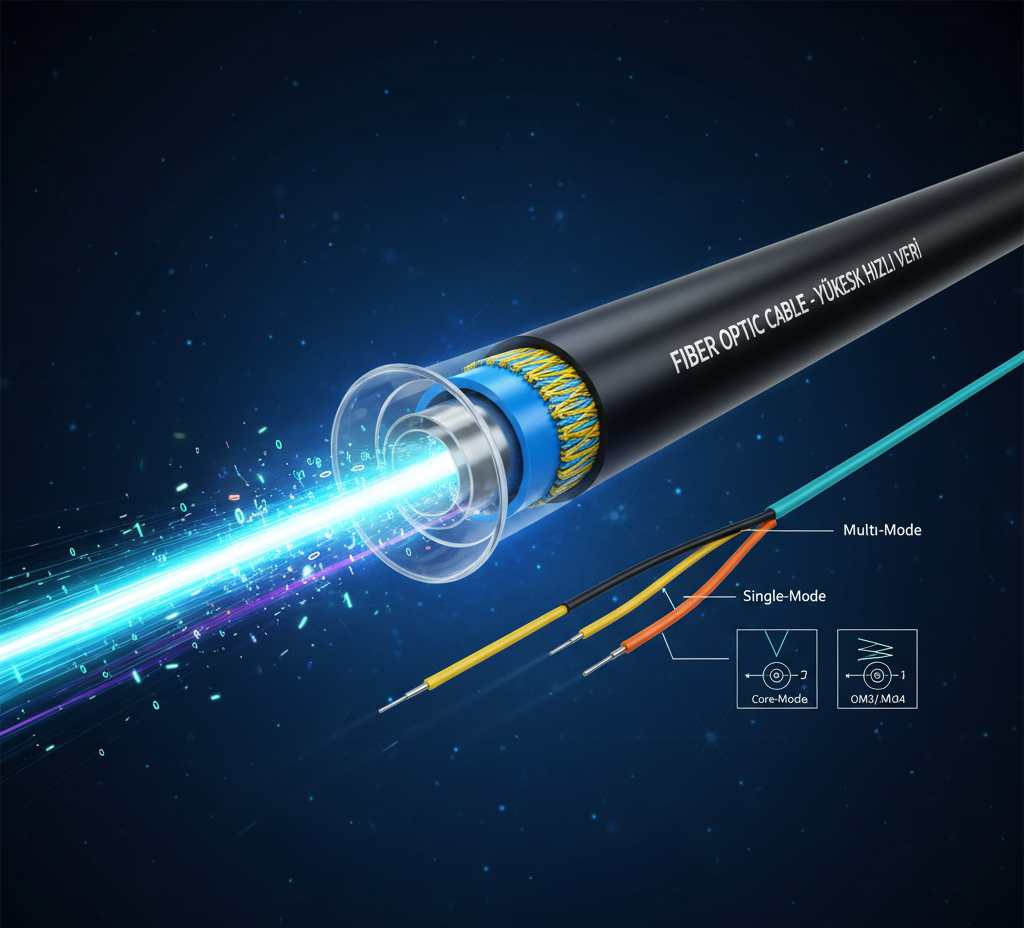
Fiber Optic Cable Areas of Use
What are the areas of use for fiber optic cable? The answer to this question is everywhere technology reaches.
- Communication and Internet: These cables, known as fiber internet cable, form the basis of today’s high-speed broadband internet services (What is fiber internet?). The speed provided by glass cable internet is thanks to this technology.
- Television and Broadcasting: Used for high-quality signal transmission in satellite infrastructures. Fiber optic TV and fiber optic LNB systems are increasingly common in satellite signal distribution.
- Network Connections and Termination: In internal building networks, a fiber optic socket is used at the connection point to the user’s device. Also, fiber patch cables easily provide connections.
- Industrial Automation: Ensures reliable data transmission in industrial environments with high electromagnetic noise.
Fiber optic cables used in outdoor environments are generally called OBK cable (Outdoor/Underground Cable). Aerial fiber optic cables with suspension wires are preferred for aerial installations.
Cross-Section and Current Carrying: The Difference Between Fiber Optic and Power Cables
The terms cable cross-sections and current carrying capacities are generally used for copper-conductor power cables. Since fiber optic cables work with light, they do not carry electric current. However, fiber optic cable producing companies (like Prysmian) manufacture hybrid cables to meet both power and data needs in infrastructures. At Deltatema, we provide a holistic solution by offering both the highest-speed fiber optics and power cables with the correct cable cross-sections and current carrying capacities (e.g., fire-resistant 2M Kablo products) for your projects.
The Importance of International Standards and Certification
Cable selection should not be based solely on brand recognition. The international standards and certifications that a product holds are the most important proof of its quality. 2M Kablo products, as well as all other materials supplied by Deltatema, have international certifications such as IEC, VDE, and TSE. These certifications guarantee that the products have been tested under demanding conditions and meet the requirements for safety, performance, and durability. By using certified products in your projects, you prevent potential malfunctions and safety risks.
Long-Term Investment with Halogen-Free Cables: Balancing Cost and Safety
Halogen-free cables may have a slightly higher initial investment cost compared to standard cables. However, this situation should be evaluated from a long-term perspective. Considering the potential damage, downtime, and even legal liabilities that can be caused by cables that do not comply with fire safety standards, this initial extra cost is very small. Halogen-free cables not only protect life and property during a fire, thereby lowering insurance costs, but also shorten the recovery time of facilities after a fire, which ensures business continuity. Therefore, the choice of halogen-free cables is not just a safety measure but also a smart financial investment in the future of your project.
Deltatema Solutions for Your Fiber Optic Projects
Choosing the right product and applying the correct installation in fiber optic cable projects is critical for system performance. At Deltatema, we maintain in our portfolio the most reliable fiber optic products from global manufacturers like Prysmian, leaders among fiber optic cable producing companies.
- Installation and Application: We provide technical knowledge and support on how to make fiber optic network connections and how to terminate a fiber optic cable. We guarantee the safety of the entire system, including the selection of the correct fiber optic converter and fiber optic socket.
For fiber optic cable projects and pricing, you can visit the Deltatema contact page. Also, for technical documentation from brands like Prysmian, you can consult the relevant external sources.
Conclusion
Considering What is Fiber Optic Cable, Types and Features, fiber optics is the future of communication infrastructure due to its high speed, security, and uninterrupted data transmission over long distances. This technology, offered with the assurance of industry giants like 2M Kablo and Prysmian, increases the competitiveness of your projects. At Deltatema, we are proud to add value to your projects with the most suitable fiber optic cable solutions.
